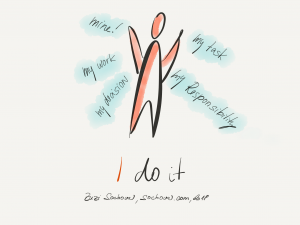Next blog in the From Good to Great series (Don’t Copy Find Your Own Way, Radical Transparency, and Agile Mindset) is focusing on the collaboration. There is nothing magical on it, just people are so got used to working as individuals that they forgot what the collaboration is about. However, collaboration is the key aspect of the Agile environment and if you can’t collaborate, there is no way you become Agile.
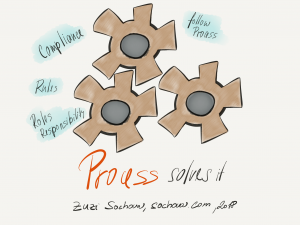 The traditional organizations are all about processes, rules, and delegation. All we need to do is to analyze the situation, come up with the way we want to handle it, and describe it in a process, and follow it. It shall be enough. It’s the world where we simply rely on processes in our day to day decision making. In simple situations, it works well, as the transparency and predictability of the situation are playing in favor. In complicated situations, it might not be flexible enough and people and organizations will struggle to react properly to the situations. In a complex situation when it’s hard to predict what happens it’s mostly failing.
The traditional organizations are all about processes, rules, and delegation. All we need to do is to analyze the situation, come up with the way we want to handle it, and describe it in a process, and follow it. It shall be enough. It’s the world where we simply rely on processes in our day to day decision making. In simple situations, it works well, as the transparency and predictability of the situation are playing in favor. In complicated situations, it might not be flexible enough and people and organizations will struggle to react properly to the situations. In a complex situation when it’s hard to predict what happens it’s mostly failing.
“Tight processes are killing creativity and only work at simple and predictable situations.”
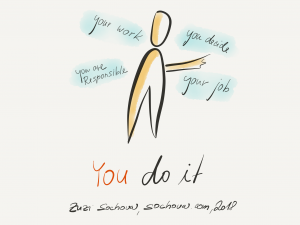 The more complicated is the situation you face on day to day basis, the more are companies failing to describe the process to be followed. It seems to be unavoidable that rules and practices are not enough to be successful, delegation come in place and the situation results in creating new roles and position for those who are responsible for certain part of the process. It allows more flexibility and responsiveness as people on the contrary to the processes can make a judgment based on the particular situation and solve it better. It’s the world of individual responsibility, where we create a single point of contact we can blame when things go wrong. Similarly to the previews process-oriented world, there is no real collaboration happening. Either I do it, or you do it. And it must be clear who is the owner.
The more complicated is the situation you face on day to day basis, the more are companies failing to describe the process to be followed. It seems to be unavoidable that rules and practices are not enough to be successful, delegation come in place and the situation results in creating new roles and position for those who are responsible for certain part of the process. It allows more flexibility and responsiveness as people on the contrary to the processes can make a judgment based on the particular situation and solve it better. It’s the world of individual responsibility, where we create a single point of contact we can blame when things go wrong. Similarly to the previews process-oriented world, there is no real collaboration happening. Either I do it, or you do it. And it must be clear who is the owner.
“Individual responsibility kills collaboration and team spirit.”
Finally, over here we cross the line of collaboration. At least from a technical point of view.
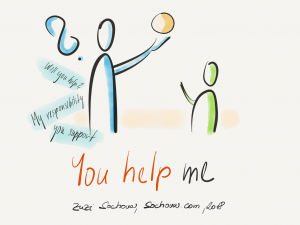
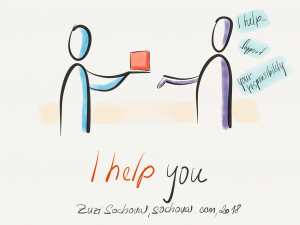 This already starts feeling like a collaboration. At least at the first look, as there are more people working together. However, there is still one person responsible and the other just helping them. It’s a good first step, but at the end of the day, it’s closer to the delegation scale, than collaboration as the unequal ownership make one side more invested in the results than the other, where the owner usually makes decisions, plans, and responsibility, while the other support them with the inputs. It’s still more likely to create blaming than shared ownership and responsibility. While it may be a good first step, it’s not collaboration as we speak about it in an agile environment.
This already starts feeling like a collaboration. At least at the first look, as there are more people working together. However, there is still one person responsible and the other just helping them. It’s a good first step, but at the end of the day, it’s closer to the delegation scale, than collaboration as the unequal ownership make one side more invested in the results than the other, where the owner usually makes decisions, plans, and responsibility, while the other support them with the inputs. It’s still more likely to create blaming than shared ownership and responsibility. While it may be a good first step, it’s not collaboration as we speak about it in an agile environment.
“Helping each other on their tasks is not a collaboration. Collaboration needs equal ownership.”
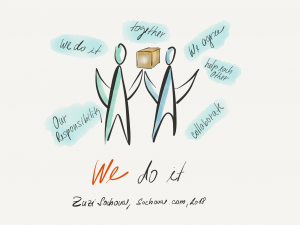 Finally, there is a real collaboration, where people have shared responsibility, shared ownership, and one goal together. It’s not important who does what, there is no task assignment up front, they all just do what is needed and make their decisions at the time. This is a type of collaboration, is what makes teams in Agile and Scrum great. Such collaboration creates high performing environments. If you truly want to be agile, and not just struggle to pretend that following practices are enough, it’s time to get rid of individual responsibility, which is often grounded in your org chart, position schemes, and career paths and learn how to create a real collaborative environment with shared responsibility and ownership. Learn how “We can do it together”.
Finally, there is a real collaboration, where people have shared responsibility, shared ownership, and one goal together. It’s not important who does what, there is no task assignment up front, they all just do what is needed and make their decisions at the time. This is a type of collaboration, is what makes teams in Agile and Scrum great. Such collaboration creates high performing environments. If you truly want to be agile, and not just struggle to pretend that following practices are enough, it’s time to get rid of individual responsibility, which is often grounded in your org chart, position schemes, and career paths and learn how to create a real collaborative environment with shared responsibility and ownership. Learn how “We can do it together”.
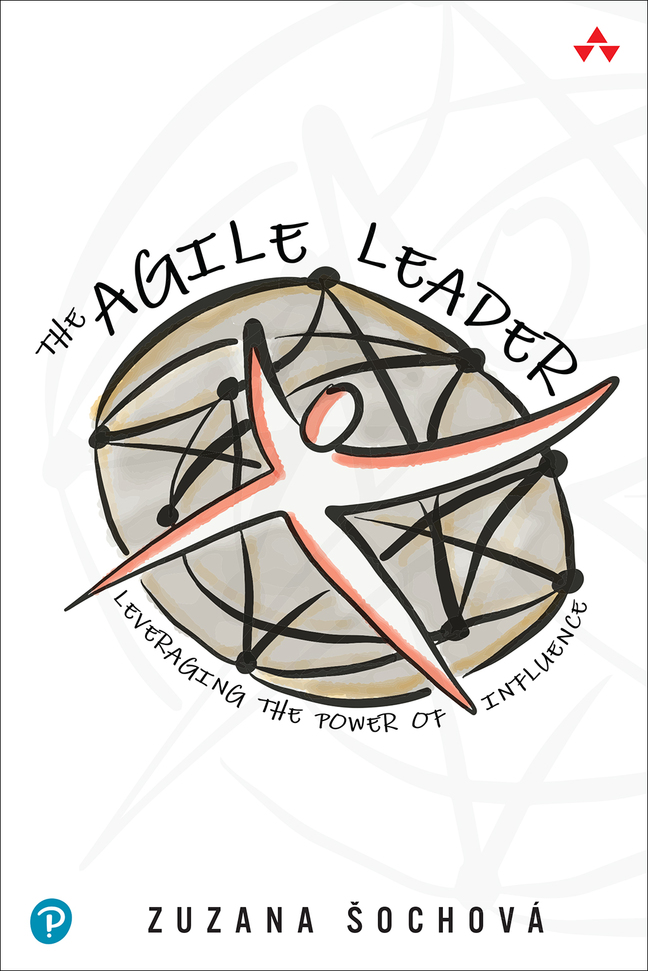
 Learn more about transforming organizations, leadership, and culture with Agile & Enterprise Coaching. Check our Scrum and Agile training sessions on Sochova.com. Grab a copy of The Great ScrumMaster: #ScrumMasterWay book and The Agile Leader: Leveraging the Power of Influence book.
Learn more about transforming organizations, leadership, and culture with Agile & Enterprise Coaching. Check our Scrum and Agile training sessions on Sochova.com. Grab a copy of The Great ScrumMaster: #ScrumMasterWay book and The Agile Leader: Leveraging the Power of Influence book.
Disclaimer: All I write on this blog is purely personal and has no relation with any position I have, used to have or will have in the future.

